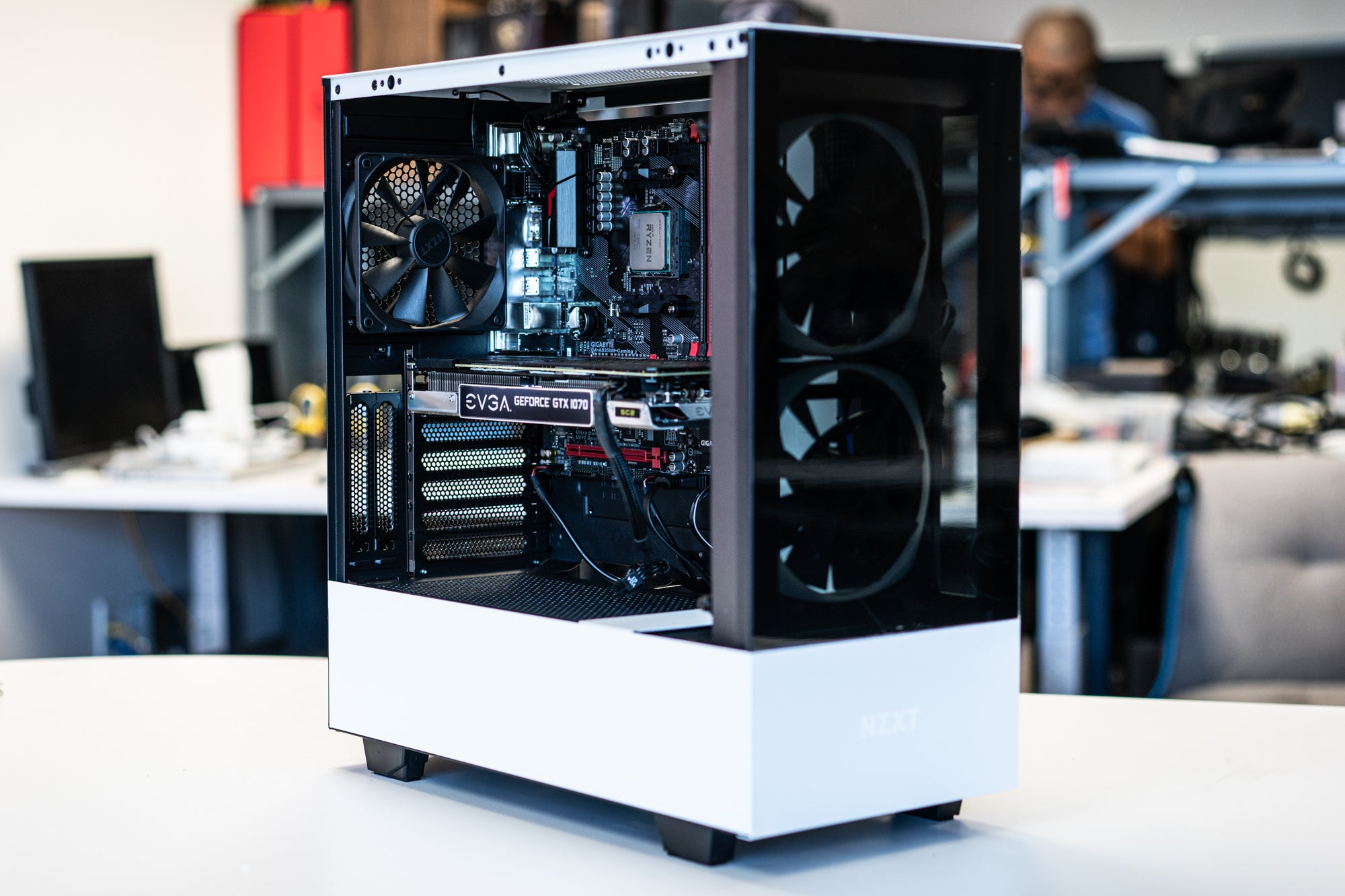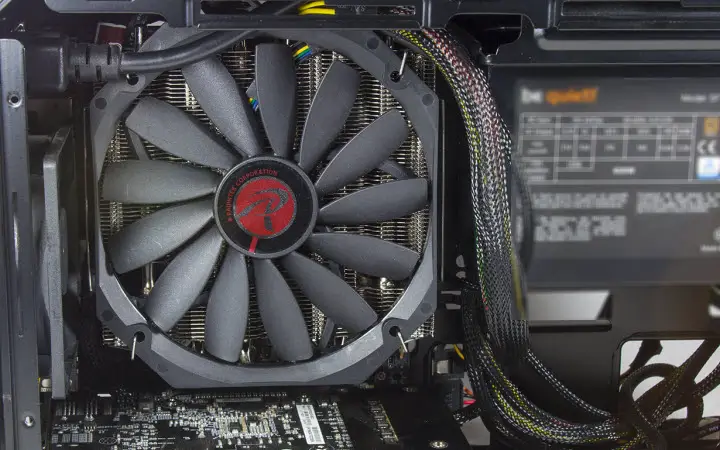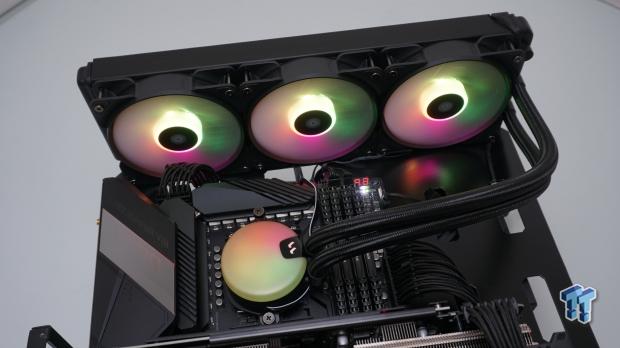When it comes to building a computer, one of the most important components to consider is the CPU cooler. This device plays a crucial role in keeping your processor cool and preventing it from overheating. However, many people are unsure of how tight their CPU cooler should be secured onto their processor. Some may think tighter is better, while others believe a looser fit is necessary for proper cooling.
In this article, we will delve into the topic of how tight your CPU cooler should be and provide you with all the information you need to know to ensure optimal performance and longevity for your computer.
Contents
Proper Tightness for CPU Cooler

Before we dive into the ideal tightness for your CPU cooler, it’s important to understand what exactly the term “tightness” means in this context. When we refer to the tightness of a CPU cooler, we are talking about the pressure applied by the cooler onto the processor. This pressure is created by the mounting mechanism of the cooler, which typically consists of screws or clips that hold the cooler in place.
So, how tight should your CPU cooler be? The answer is, it depends. The ideal tightness for your CPU cooler will vary depending on various factors such as the type of cooler, the type of processor, and personal preference. However, there are some general guidelines that can help you determine the proper tightness for your CPU cooler.
Type of Cooler
The first factor to consider when determining the proper tightness for your CPU cooler is the type of cooler you are using. There are two main types of CPU coolers – air coolers and liquid coolers. Air coolers use a fan to dissipate heat from the processor, while liquid coolers use a pump and radiator to circulate coolant and remove heat.
For air coolers, the tightness should be enough to create a good contact between the cooler and the processor. This means that the cooler should be securely attached to the processor without any gaps or movement. However, it’s important not to over-tighten the screws as this can cause damage to the processor or the motherboard.
On the other hand, liquid coolers require a slightly tighter fit than air coolers. This is because liquid coolers rely on a tight seal between the pump and the CPU block to effectively transfer heat away from the processor. If the cooler is not tight enough, there may be air pockets in the system, which can hinder the cooling process.
Type of Processor
Another factor to consider when determining the proper tightness for your CPU cooler is the type of processor you have. Processors come in different sizes and shapes, and some may require a tighter fit than others. For example, Intel processors have a smaller surface area compared to AMD processors, so they may require a tighter fit to ensure proper contact with the cooler.
Additionally, if you have an overclocked processor, you may need to tighten the cooler more than usual. Overclocking increases the heat output of the processor, so a tighter fit is necessary to ensure efficient cooling.
Personal Preference
Lastly, personal preference also plays a role in determining the proper tightness for your CPU cooler. Some people prefer a tighter fit for peace of mind, while others prefer a looser fit to avoid any potential damage to their components. Ultimately, it’s up to you to decide how tight you want your CPU cooler to be, as long as it falls within the recommended guidelines.
Finding the Right Tightness for Your CPU Cooler

Now that we’ve discussed the factors that affect the tightness of your CPU cooler, let’s talk about how to find the right tightness for your specific setup. The following steps will help guide you in determining the ideal tightness for your CPU cooler:
- Start by loosely attaching the cooler onto the processor. This means screwing or clipping the cooler onto the motherboard without applying too much pressure.
- Turn on your computer and monitor the temperature of your processor. You can use software like Core Temp or HWMonitor to check the temperature.
- Run a stress test on your processor. This will put your CPU under heavy load and increase its temperature.
- While the stress test is running, gradually tighten the screws or clips of your CPU cooler. Keep an eye on the temperature and stop tightening once you see a significant drop in temperature.
- If you notice that the temperature starts to rise again, you may have tightened the cooler too much. In this case, loosen the screws or clips slightly until the temperature stabilizes.
It’s important to note that the ideal tightness for your CPU cooler may change over time. As your computer ages, the thermal paste between the cooler and the processor may dry out, causing a decrease in cooling efficiency. In this case, you may need to tighten the cooler more than before to compensate for the loss of thermal conductivity.
Importance of Properly Securing Your CPU Cooler

Now that we’ve discussed how to determine the proper tightness for your CPU cooler, let’s talk about why it’s important to secure your cooler properly. The following are some reasons why you should pay attention to the tightness of your CPU cooler:
- Efficient Cooling: The main purpose of a CPU cooler is to keep your processor cool and prevent it from overheating. A properly secured cooler ensures good contact with the processor, allowing for efficient heat transfer and cooling.
- Prevents Damage to Components: Over-tightening your CPU cooler can cause damage to your processor or motherboard. This can lead to costly repairs or even the need to replace your components altogether.
- Longevity of Your Computer: A well-cooled processor can last longer than one that constantly runs at high temperatures. By properly securing your CPU cooler, you are ensuring that your processor is operating within safe temperature ranges, which can prolong its lifespan.
- Better Performance: When your processor is running at optimal temperatures, it can perform better and handle more demanding tasks without overheating. This can result in a smoother and faster computing experience.
Determining the Ideal Tightness for Your CPU Cooler

To help you determine the ideal tightness for your specific setup, we have compiled a table that outlines the recommended tightness for different types of coolers and processors. Keep in mind that these are general guidelines and may vary depending on your specific components and personal preference.
| Type of Cooler | Type of Processor | Recommended Tightness |
|---|---|---|
| Air Cooler | Intel | Finger-tight |
| Air Cooler | AMD | Slightly tighter than finger-tight |
| Liquid Cooler | Intel | Tighter than air cooler |
| Liquid Cooler | AMD | Tighter than air cooler, but not too much pressure on the pump |
Avoiding Common Mistakes When Securing Your CPU Cooler

When it comes to securing your CPU cooler, there are some common mistakes that people make that can lead to issues with cooling efficiency or even damage to their components. Here are some things to avoid when securing your CPU cooler:
- Over-tightening: As mentioned earlier, over-tightening your CPU cooler can cause damage to your components. It’s important to find the right balance between a secure fit and applying too much pressure.
- Not Tightening Enough: On the other hand, not tightening your CPU cooler enough can also cause problems. If the cooler is too loose, it may not make proper contact with the processor, resulting in poor cooling performance.
- Using the Wrong Tools: When securing your CPU cooler, it’s important to use the right tools. Using a screwdriver that is too big or too small can strip the screws or damage the mounting mechanism.
- Not Cleaning the Surface: Before attaching your CPU cooler, make sure to clean the surface of your processor with isopropyl alcohol. This will remove any dust, debris, or old thermal paste, ensuring a good contact between the cooler and the processor.
Expert Tips for Securing Your CPU Cooler
To wrap up this article, we have gathered some expert tips from computer enthusiasts and professionals on how to properly secure your CPU cooler:
- “Always use a cross pattern when tightening the screws of your CPU cooler. This ensures even pressure and prevents any potential warping of the cooler or motherboard.” – John, PC enthusiast.
- “If you’re using an air cooler, make sure to check the orientation of the fan. You want the fan to blow air towards the back of your case, where the exhaust fan is located.” – Sarah, IT professional.
- “For liquid coolers, it’s important to regularly check for any leaks or air pockets in the system. These can cause issues with cooling efficiency and potentially damage your components.” – Mark, computer technician.
Conclusion
In conclusion, the ideal tightness for your CPU cooler will vary depending on various factors such as the type of cooler, type of processor, and personal preference. It’s important to find the right balance between a secure fit and applying too much pressure to avoid any potential damage to your components. By following the guidelines and tips outlined in this article, you can ensure efficient cooling and optimal performance for your computer. Remember to regularly monitor the temperature of your processor and adjust the tightness of your CPU cooler if necessary.

Information Security Asia is the go-to website for the latest cybersecurity and tech news in various sectors. Our expert writers provide insights and analysis that you can trust, so you can stay ahead of the curve and protect your business. Whether you are a small business, an enterprise or even a government agency, we have the latest updates and advice for all aspects of cybersecurity.

